Vivid Yellow Prefab Home Sits Lightly in the Forest
Many homes designed for forested environments go out of their way to blend in with nature. The idea behind the strategy of camouflage is simple: we, as humans, should try to limit our impact on the few environments that remain relatively untouched by our activities by making ourselves unobtrusive. Sometimes, architects keep homes low profile so others who might pass by them can feel more like they’re in a natural area. These goals may be sustainable on the surface, but they’re growing increasingly irrelevant, argues architect Alejandro Soffia.
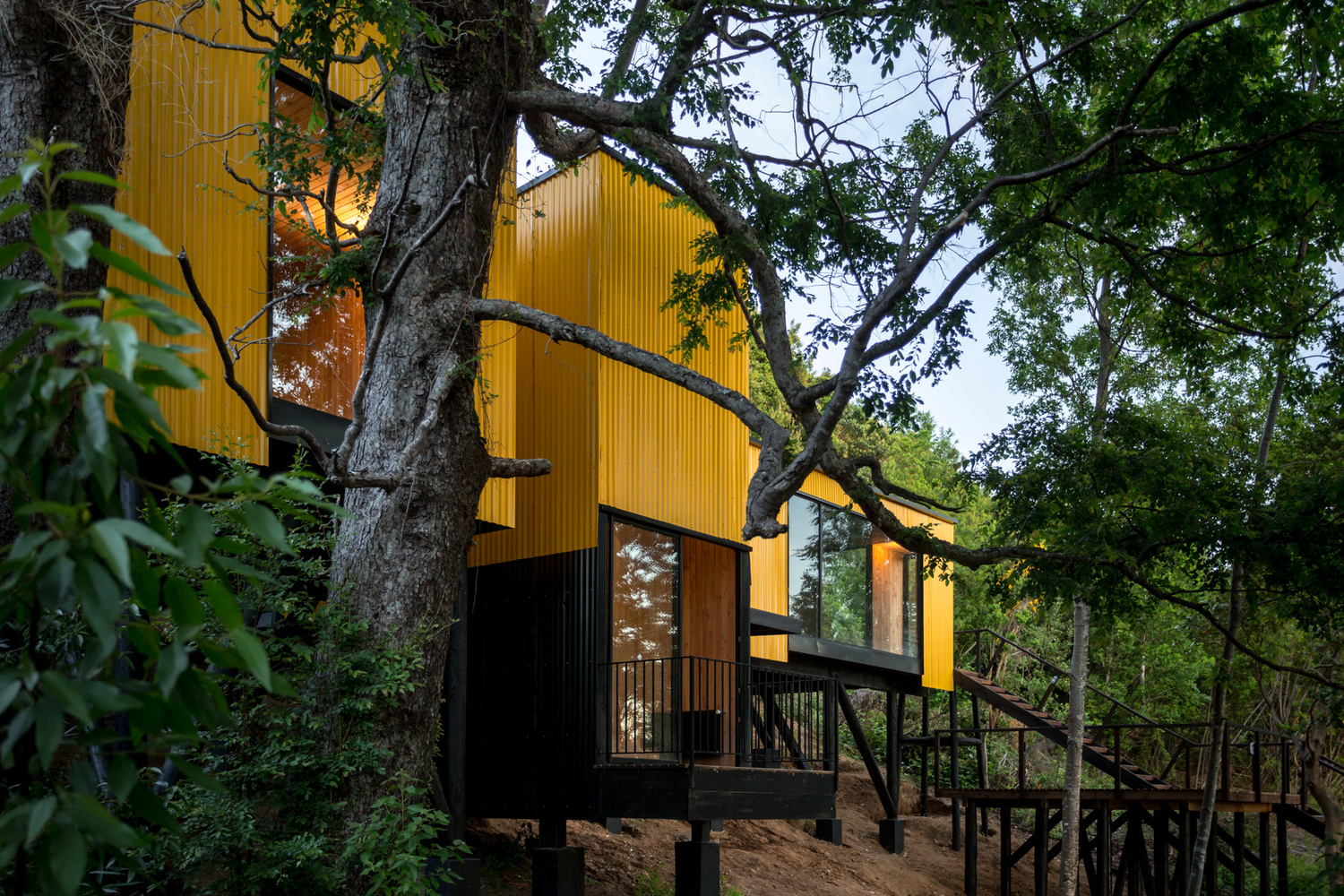
As crowded cities struggle to adequately house burgeoning populations, keeping urban sprawl in check will remain a significant concern — but all of those people still have to live somewhere. What’s important, says Soffia, is building houses that are sustainable in more measurable ways. Not only does his “Yellow House” sit lightly within its wooded environment along the coast in Pucón, Chile, but it also makes use of a particular modern technology that might grow more important than ever in the years to come.
“The environments we build must provide good living conditions, with comfortable spaces, natural light, and good acoustics, but they should also start a dialogue with the preceding one — the natural environment” he adds.
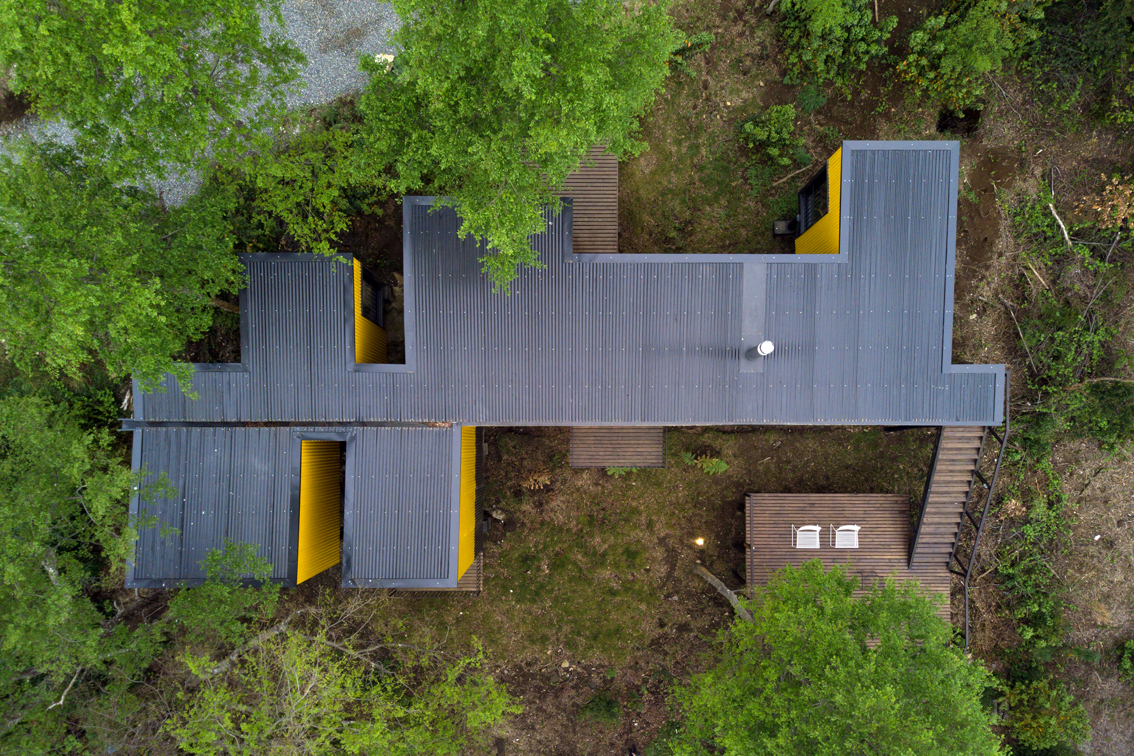

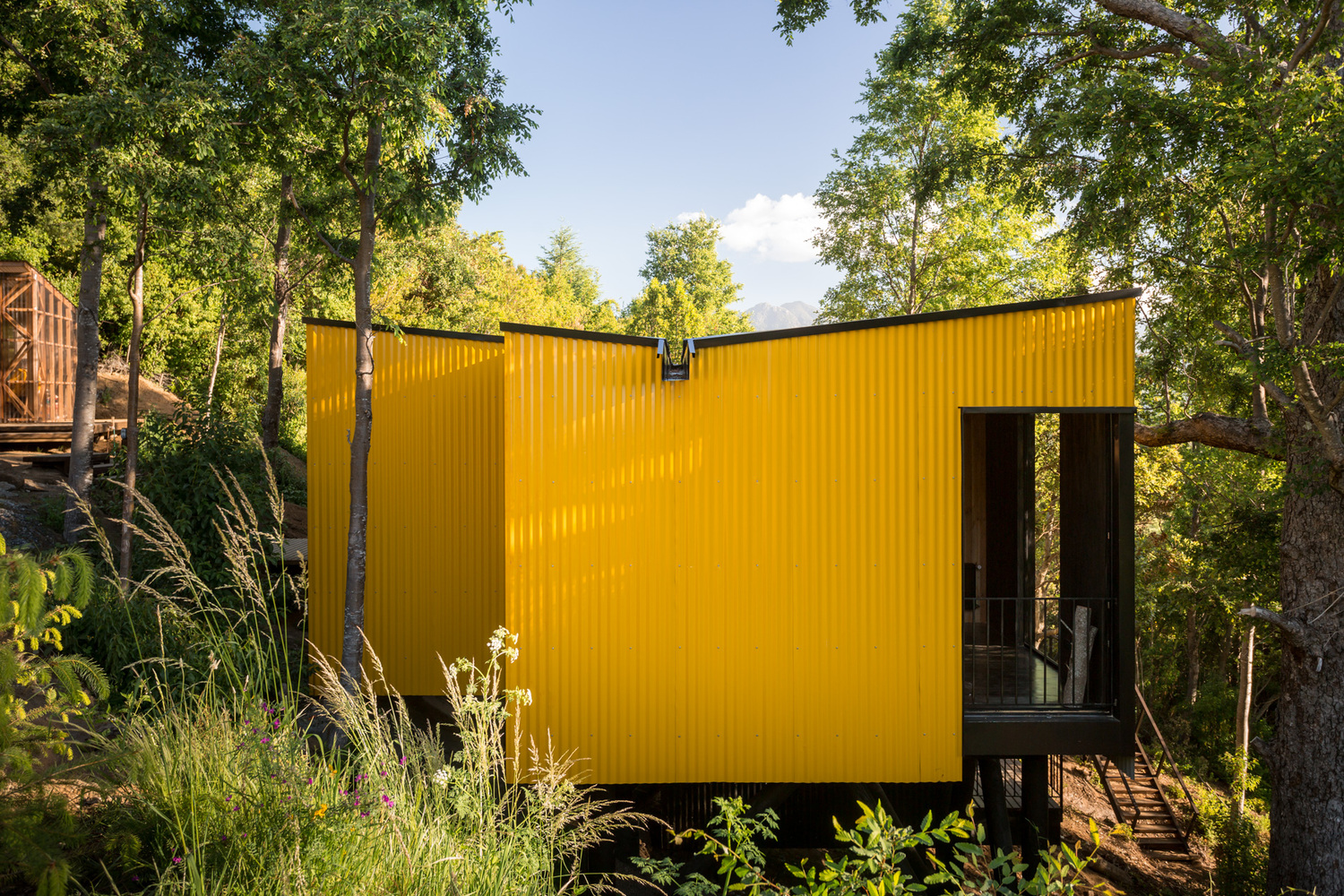
“So in my point of view, architecture faces two main human challenges: first, decreasing its impact over nature’s equilibrium, and second, building many square meters of good quality for an actual and coming population. I am right now as an architect, in this second challenge, trying to develop prefab systems with good (true/beauty) design. That’s why I selected prefabrication as a strategy for building my projects, but also during the design process, too.”
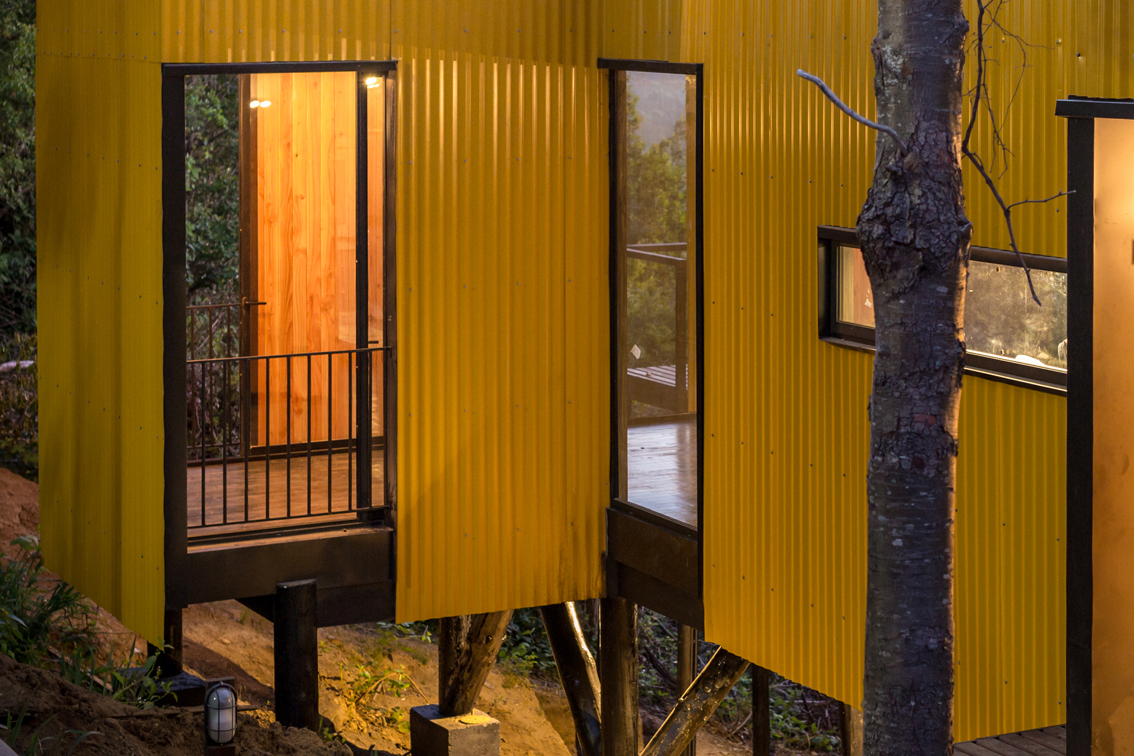
“The hypothesis is that if you create a prefabricated system which has a good architectural design, then you can reproduce this quality as much as you need it, within the laws of short/long production series. And if in the serial industrial production of buildings you get bored, you can also customize form and function through the system. [This means] more benefits when you hasten the building process and [gives] more control over quality and cost.”
Yellow House is built around the existing trees in the area, with a design based on modular slab panels that allow the house to be scaled up or down as needed. The design also makes use of prefabrication to limit the noisy, pollution-producing process of constructing a building on-site. After all, prefab homes are extremely quick and easy to build off-site in a factory and transport to their intended locations.
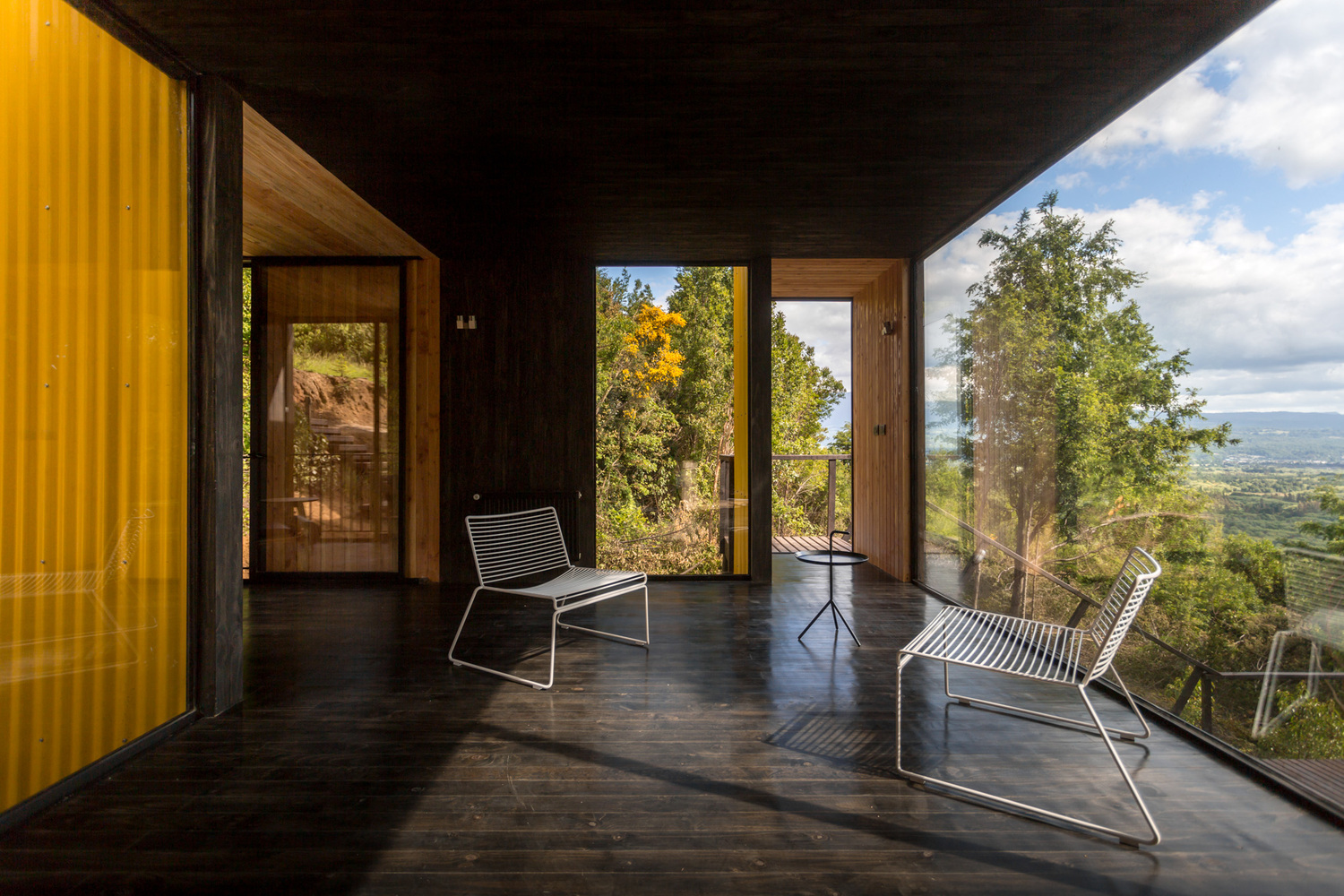
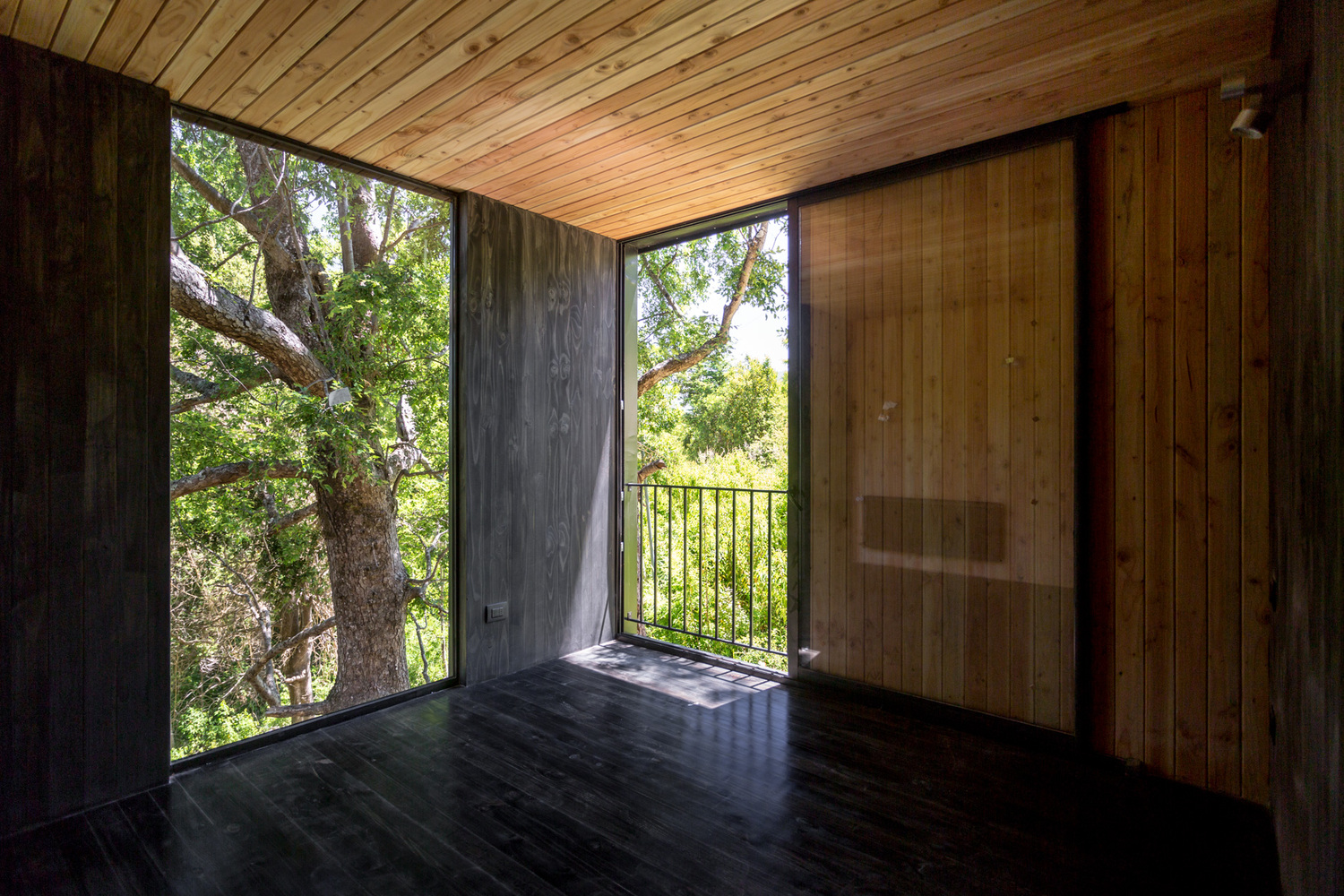
When they’re placed on stilts like Yellow House, prefab homes can also adapt to all sorts of terrain. And adaptability may be one of the most important parts of building sustainable architecture in the future, ensuring that we’re able to respond to changing needs and events without producing excessive waste.

The architect doesn’t directly address his choice to paint this home such a vivid color, other than to say that the shade is so powerful, it just had to “conquer” the name of the project. But once it’s set up, hovering in the forest with its generous windows gazing out at the beautiful scenery beyond, Yellow House reveals what our impacts on the environment really are. There’s no denying that the house is there. It doesn’t try to cloak itself in the colors and textures of the woods. But in many ways, it’s friendlier to the environment than camouflaged houses built with no regard for their true impact on the planet’s delicate ecosystems.




